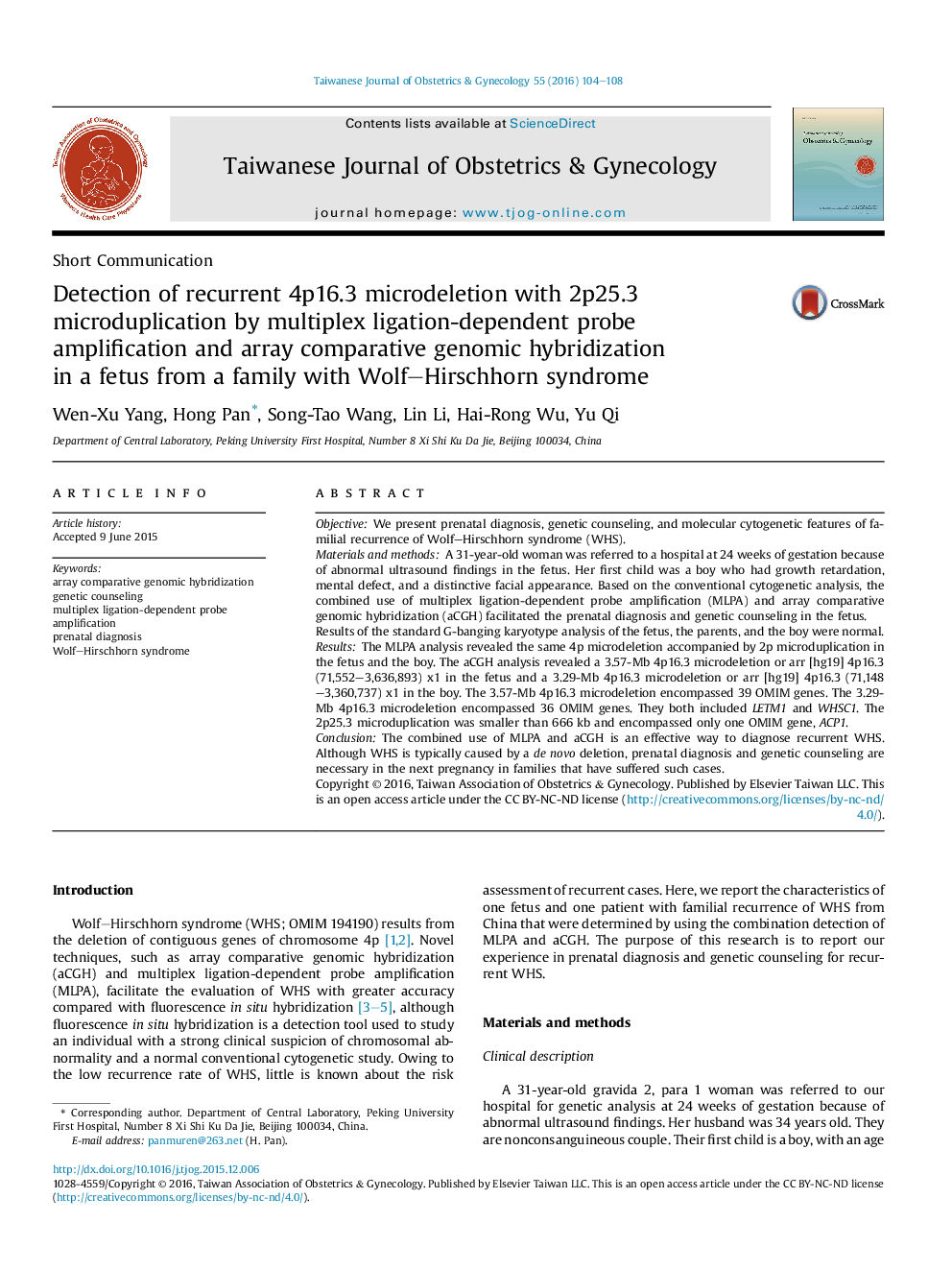| Article ID | Journal | Published Year | Pages | File Type |
|---|---|---|---|---|
| 3975024 | Taiwanese Journal of Obstetrics and Gynecology | 2016 | 5 Pages |
ObjectiveWe present prenatal diagnosis, genetic counseling, and molecular cytogenetic features of familial recurrence of Wolf–Hirschhorn syndrome (WHS).Materials and methodsA 31-year-old woman was referred to a hospital at 24 weeks of gestation because of abnormal ultrasound findings in the fetus. Her first child was a boy who had growth retardation, mental defect, and a distinctive facial appearance. Based on the conventional cytogenetic analysis, the combined use of multiplex ligation-dependent probe amplification (MLPA) and array comparative genomic hybridization (aCGH) facilitated the prenatal diagnosis and genetic counseling in the fetus.Results of the standard G-banging karyotype analysis of the fetus, the parents, and the boy were normal.ResultsThe MLPA analysis revealed the same 4p microdeletion accompanied by 2p microduplication in the fetus and the boy. The aCGH analysis revealed a 3.57-Mb 4p16.3 microdeletion or arr [hg19] 4p16.3 (71,552–3,636,893) x1 in the fetus and a 3.29-Mb 4p16.3 microdeletion or arr [hg19] 4p16.3 (71,148–3,360,737) x1 in the boy. The 3.57-Mb 4p16.3 microdeletion encompassed 39 OMIM genes. The 3.29-Mb 4p16.3 microdeletion encompassed 36 OMIM genes. They both included LETM1 and WHSC1. The 2p25.3 microduplication was smaller than 666 kb and encompassed only one OMIM gene, ACP1.ConclusionThe combined use of MLPA and aCGH is an effective way to diagnose recurrent WHS. Although WHS is typically caused by a de novo deletion, prenatal diagnosis and genetic counseling are necessary in the next pregnancy in families that have suffered such cases.
